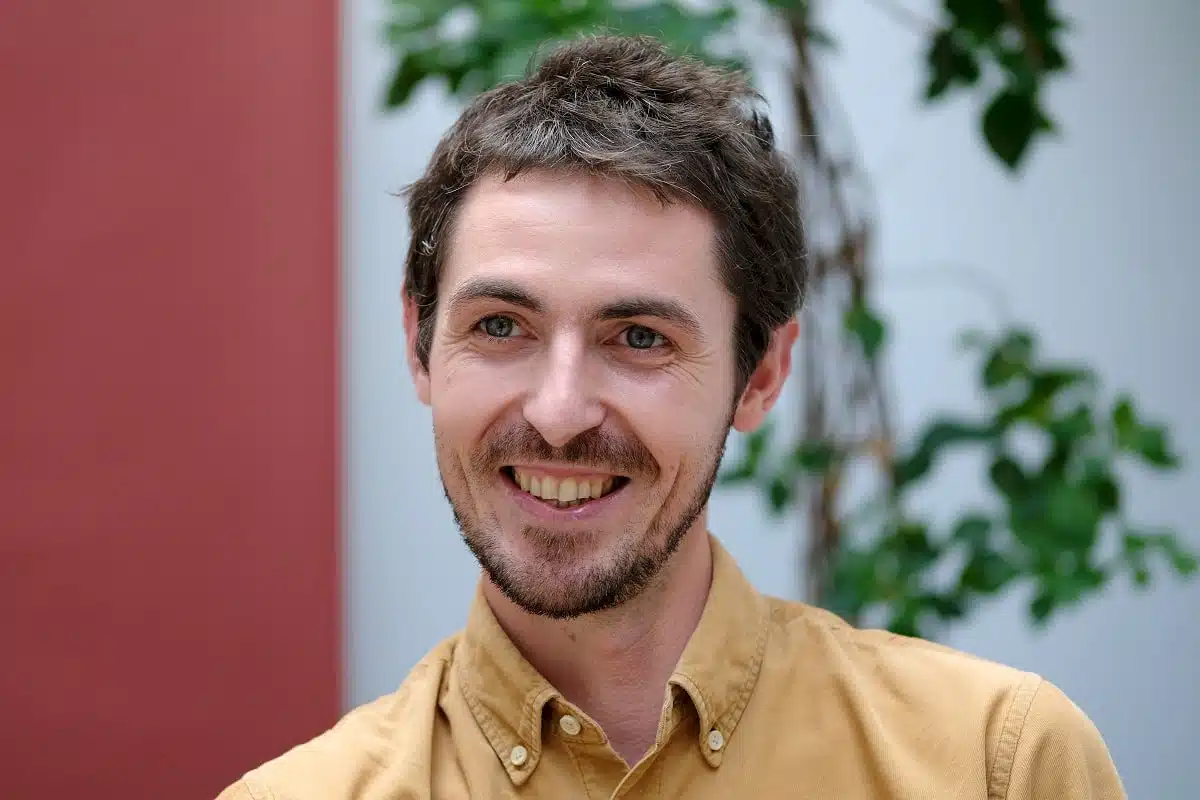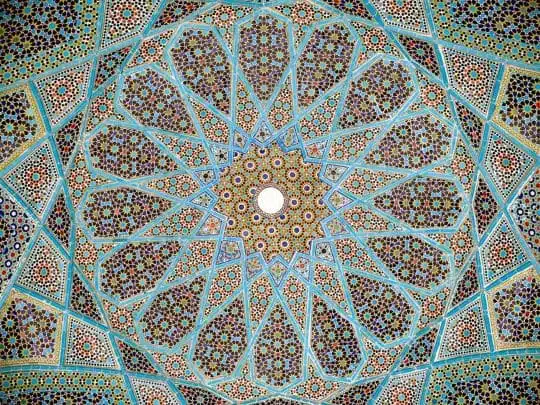The Friend of Good 4

Written By Grégoire Langouet
Blog | History of Dzogchen | The Dzogchen basics
In this final article in our series on the Master, Grégoire talks about Sufi Islam and its similarities with Dzogchen.
The Friend of Good 4. The Master in Islam
Let’s now turn to Islam, to continue our journey into the Eastern traditions and their relationship to the Master. Like Judaism, this great and vast tradition has at its core its most spiritual element – in Sunni Islam: Sufism (taṣawwuf). The figure of the master (sheikh – شيخ ) is central to it. Called pîr in the Persian world, the role of the master is strangely similar to the one already found in previous articles, whether in Asia, in the West or the ancient Near East…
The aspirant to the Way, like all Muslim believers, must first practice the five pillars of Islam (profession of faith, prayer, almsgiving, pilgrimage, Ramadan fasting). It is then a personal spiritual quest that will lead him to the master. Ibn ʿArabî (1165-1240), perhaps the most famous Sufi along with Jalâl al-Din Rûmi (1207-1273), writes in his Kitâb al-tadbîrât al-ilâhiyya (Book of the Divine Rulers) that one of the central elements of the spiritual path consists in “seeking a teacher (ustâdh) who will make you see the defects of your soul (ʿuyûb nafsik)”. But do we really have a choice ? And who’s looking for whom?” I’ve been waiting for you for twenty years,” says his future master to Emir Abd-el Kader, Sheikh Muhammad al-Fasî, at their first meeting in Mecca.
As in the Dzogchen, the master trains (tarbiya) the disciple. He will put him through a series of tests designed to ensure his determination and sincerity. In the Tibetan world, the example of Marpa and Milarepa (11th century) comes to mind… The master must know his disciples well in order to guide them as accurately as possible. For effective guidance (ṣuḥba), general teachings and instructions are generally not enough. What’s needed is close, personal guidance. This is not without its problems when, today, certain school or order – Sufi communities, institutionalized from the 12th century onwards – have thousands of disciples… In such cases, the sheikh is sometimes assisted by spiritual guides (murshid).
“But as in Dzogchen, in Sufi Islam the master is not always a human being! Ultimately, everything is the master.”
On the initiatory path (tarîqa), the disciple moves towards divine reality (haqîqa). He seeks to “experience” it through primordial knowledge (ma’rifa) or mystical union (al-fanâ’). This will lead him to annihilate his soul (nafs) in God by reliving the Prophet Muhammad’s intimate experience of the night of Mi’râj: his nightly ascent (isrâ) from Mecca to Jerusalem.
In order to immerse or annihilate (al-fanâ’) himself in God, the disciple first merge with his master, then with the Prophet Muhammad. An initiatory chain (silsila) thus links God to the disciple via Muhammad and his own master.
In order for the disciple to immerse himself in his master, he receives from him the initiation of the lineage, often in the form of the “taking of the pact” (‘ahd, bay’a), which then re-actualizes the pact made between God and Humans (Koran, 7, 172). Through the sheikh, the baraka, the divine grace of Muhammadan reality (haqiqa muhammadiyya) is poured out. The disciple thus becomes its heir on earth, reminding us of the central message of divine oneness (tawhîd): Lâ ilâha illa Allah, “There is no god but God”.
But as in Dzogchen, in Sufi Islam the master is not always a human being! Ultimately, everything is the master. An animal can be one, as can an inanimate object. Ibn ʿArabî, for example, found the master in a gutter naturally allowing rainwater to pour into it – in complete trust and submission to the divine order.
The human master, for his part, has special functions: the preservation and transmission of the secret (sirr) of the Divine Presence of which he is the depository. In fact, each master has characteristics associated with a particular prophetic type: Jesus, Moses, Solomon, etc. They tend to be teachers, healers, animal keepers, helpers of the poor and so on. For each generation, there is even a Master of Masters: the Pole (qutb). He is the equivalent of the Imam in the Shiite tradition. In Sufi Islam, as is often the case in Dzogchen, we usually receive instructions from a single master. He accompanies and guides us throughout our lives, during our dying… and even beyond death…
Along the way, the disciple will experience spiritual states (ahwâl) punctuated by stations (maqâmât), all the way to drunkenness and sustenance (baqâ’) in God. On this path, the master is the model to follow, in the image of the Prophet (nabî) and Messenger (rasûl) of Islam, Muhammad. It is through the example of his life and his imitation that we progress. This “beautiful behavior” (ihsân) will serve as a compass for the disciple’s existence.
To the master, the aspirant (murîd) owes reverence and devotion. He enters into a very special relationship with him, in full awareness and freedom. He relies on him completely for his spiritual development, but the sheikh also assumes other more social functions. He is consulted for marriage, professional advice or health concerns.
The sheikh may be a great scholar versed in the exoteric sciences of law and theology, or a simple craftsman; a charismatic orator of the Koranic schools (madrasa) or a humble baker teaching by his gestures, his gaze, his silence and his presence. In fact, in all circumstances, the master acts on a subtle level, whether or not he is in the physical presence of the disciple.
They also practice together: praying, reciting, sometimes even singing and dancing as a community, until they reach the ecstatic moments characteristic of certain Sufi orders. The most common of these practices is dhikr (or zikr – ذِكْر): recalling the presence of God/Allah. Certain techniques involving the use of breath, body movements and the repeated utterance of syllables, taught and then guided by the master, then allow access to spiritual states. They are reminiscent of certain Himalayan techniques… You’ll find plenty of video examples on the internet!
And while dhikr is not often open to non-Muslims, there are times when profound exchanges take place between traditions… For example, a Kabbalist master once told me that his own master and his disciples, Sephardic Jews from Morocco, had to go on specific retreats. As a small community, they didn’t have a suitable place. So who did they turn to? To their Sufi brothers and sisters, who wide opened the doors of their zâwiya and offered them the best conditions for their spiritual retreats. Jewish Kabbalists among Muslim Sufis: an example that could well inspire us today…
More Posts
High Diving
In “High Diving” by Mila Khyentse, everything is about diving and hovering… in the Olympic Games of Great Perfection.
Nenikekamen!
With “Nenikekamen!” Grégoire compares the marathon, the flagship event of the Olympic Games, to the Dzogchen path.
Opening Ceremony
Nils compares the Olympic Games Opening Ceremony to the introduction in Dzogchen, kicking off the Great Perfection Summer Games series!




